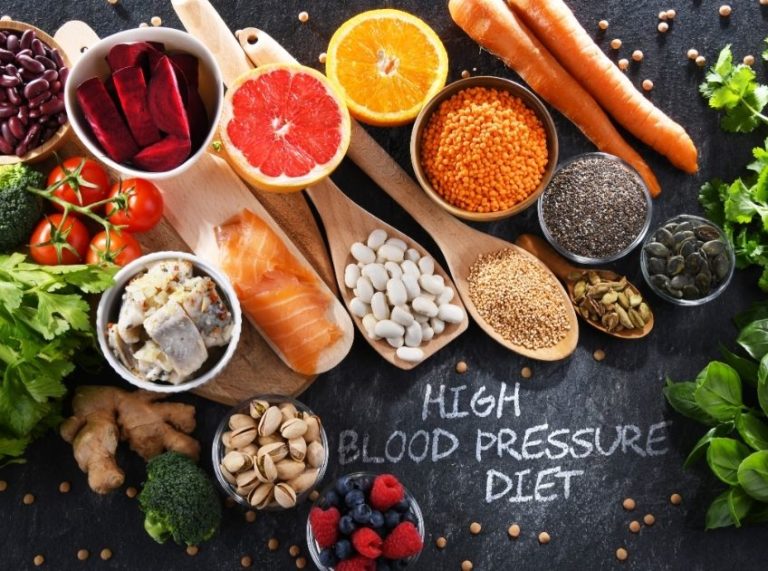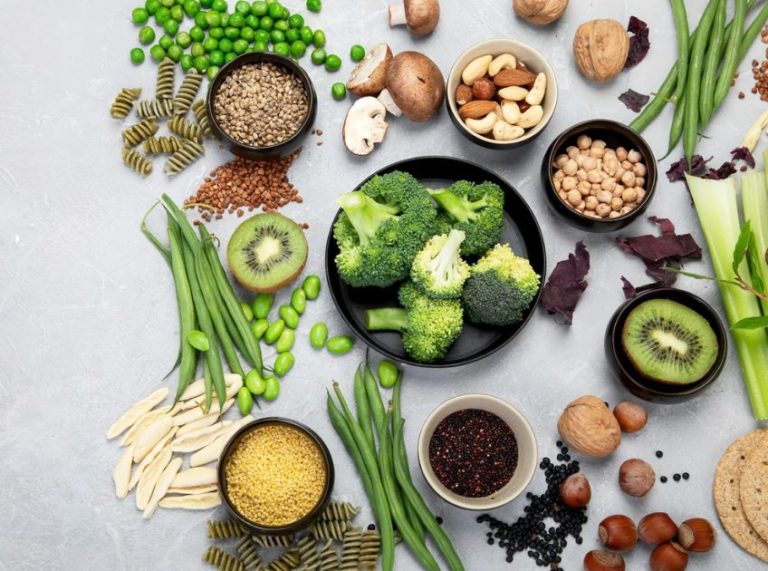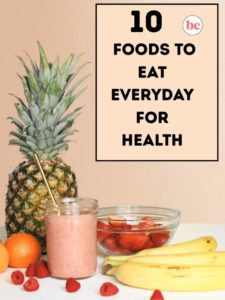
Important: This article is for informational purposes only. Please read our full disclaimer for more details.
For years, carbohydrates have been unfairly blamed for weight gain and sluggishness. But here’s the truth — not all carbs are created equal. While refined carbs like white bread and sugary snacks can spike blood sugar and contribute to health issues, complex carbs from whole, fiber-rich foods are an essential part of a balanced diet.
Carbohydrates fuel your brain, muscles, and organs — they’re your body’s preferred source of energy. The key is choosing nutrient-dense, slow-digesting carbs that offer more than just calories. Let’s explore 12 high-carb foods that are not only healthy but also vital for long-term energy and wellness.
12 High-Carb Foods That Deserve a Spot in Your Diet
Carbohydrates often get a bad reputation, but when you choose the right sources, they can be incredibly beneficial. The following high-carb foods are packed with fiber, vitamins, minerals, and antioxidants — offering sustained energy and numerous health benefits.
1. Quinoa – The Ancient Grain Packed with Protein and Fiber
Quinoa isn’t just a trendy superfood — it’s one of the most nutritious grains on the planet. Containing about 70% carbohydrates, quinoa also provides all nine essential amino acids, making it a complete protein source.
It’s rich in magnesium, iron, and antioxidants like quercetin and kaempferol, which have anti-inflammatory and heart-protective effects. A 2017 study published in the Journal of Food Science and Technology found that quinoa consumption can help regulate blood sugar and improve lipid profiles, making it ideal for metabolic health (1).
Best way to enjoy: Use quinoa as a base for salads, as a rice alternative, or in breakfast bowls with fruits and nuts.
2. Oats – The Breakfast Champion for Heart Health
Oats are among the healthiest grains, boasting a unique type of soluble fiber called beta-glucan. This compound helps lower cholesterol, supports gut health, and enhances feelings of fullness.
According to research in Nutrients (2021), regular oat intake can reduce LDL cholesterol and stabilize blood sugar levels — essential for those managing heart disease or diabetes (2).
Best way to enjoy: Start your day with overnight oats, oatmeal porridge, or add ground oats to smoothies and baked goods for a fiber boost.
3. Sweet Potatoes – Naturally Sweet and Nutrient-Dense
Sweet potatoes are rich in complex carbs that digest slowly, giving you long-lasting energy. They’re loaded with beta-carotene (vitamin A), potassium, and antioxidants that support vision, immunity, and heart health.
A 2019 review in Critical Reviews in Food Science and Nutrition noted that sweet potatoes may improve antioxidant status and reduce inflammation in the body (3).
Best way to enjoy: Roast, mash, or bake them as fries. Pair with protein like grilled chicken for a balanced meal.
4. Brown Rice – A Wholesome Grain for Sustained Energy
Brown rice is a whole-grain carb source that’s high in fiber, manganese, and selenium. Unlike white rice, it keeps its bran and germ layers, offering better digestion and nutrient density.
Studies show that replacing refined grains with brown rice can improve blood sugar control and reduce the risk of metabolic syndrome (4).
Best way to enjoy: Swap white rice for brown rice in stir-fries, grain bowls, or as a side to curries.
5. Bananas – The Go-To Natural Energy Snack
Bananas are one of the most convenient and nutritious carbohydrate-rich fruits. They provide quick-digesting sugars, potassium, and vitamin B6 — all of which help regulate nerve and muscle function.
A PLoS ONE study found that bananas are as effective as sports drinks in maintaining endurance during prolonged exercise (5).
Best way to enjoy: Eat them as a pre-workout snack, blend them into smoothies, or freeze and mash them for a healthy dessert alternative.
6. Legumes – Beans, Lentils, and Chickpeas for Balanced Nutrition
Legumes are an excellent source of carbohydrates, protein, and fiber. They release energy slowly, making them great for managing blood sugar and appetite.
A review published in the British Journal of Nutrition found that regular legume consumption is associated with improved glycemic control and reduced risk of heart disease (6).
Best way to enjoy: Add lentils to soups, chickpeas to salads, or make bean-based stews and curries.
7. Beets – The Performance-Enhancing Root Vegetable
Beets are high in natural carbs and dietary nitrates, which help improve blood flow and stamina. According to a study in the Journal of Applied Physiology, beetroot juice enhances athletic performance by improving oxygen utilization during exercise (7).
They’re also rich in folate and betalains — pigments with powerful anti-inflammatory and detoxifying properties.
Best way to enjoy: Blend into juices, roast with olive oil, or grate raw into salads.
8. Berries – Sweet, Colorful, and Fiber-Rich
Berries like blueberries, raspberries, and strawberries are packed with healthy carbohydrates, mainly in the form of fiber and natural sugars. Despite being sweet, they have a low glycemic index, which helps prevent blood sugar spikes.
They’re also rich in antioxidants such as anthocyanins, which may protect against heart disease and cognitive decline (8).
Best way to enjoy: Add to yogurt, oatmeal, or smoothies for a colorful antioxidant punch.
9. Whole-Grain Bread – The Smarter Carb Choice
Whole-grain bread made from 100% whole wheat or sprouted grains is a great way to include complex carbs in your diet. It’s rich in fiber, B vitamins, and trace minerals like zinc and iron.
A study in Public Health Nutrition found that individuals who regularly consume whole grains have lower risks of cardiovascular disease and obesity compared to those who eat refined grains (9).
Best way to enjoy: Pair with nut butter, avocado, or lean protein for a balanced, filling meal.
10. Apples – Crunchy, Filling, and Good for the Gut
Apples are naturally rich in carbohydrates, mainly fructose and fiber (especially pectin). This fiber acts as a prebiotic, nourishing healthy gut bacteria and supporting digestion.
According to Advances in Nutrition, apple consumption is associated with lower risks of cardiovascular disease and certain cancers due to its antioxidant polyphenols (10).
Best way to enjoy: Eat whole for a quick snack, or add slices to salads, oats, or nut butter toast.
11. Pumpkin – A Nutrient-Dense Carb Source for All Seasons
Pumpkin is a surprisingly healthy high-carb food, rich in fiber, potassium, and beta-carotene. Despite its mild sweetness, it has a low calorie density, making it ideal for weight-conscious diets.
Its antioxidant compounds also help fight oxidative stress and support skin and eye health (11).
Best way to enjoy: Use in soups, smoothies, or bake pumpkin puree into healthy muffins or pancakes.
12. Barley – The Forgotten Grain for Digestive Health
Barley is a high-fiber grain containing beta-glucan, known for lowering cholesterol and improving satiety. It also stabilizes blood sugar by slowing carbohydrate absorption.
A 2020 study in The American Journal of Clinical Nutrition found that diets including barley significantly improved glycemic control in individuals with insulin resistance (12).
Best way to enjoy: Add barley to soups, salads, or use as a hearty base for grain bowls.
Why These Carbs Are Different: The Science Behind the Choices
Healthy carbs are complex, meaning they digest slowly and provide steady energy. They also contain fiber, antioxidants, and phytonutrients that support digestion, brain function, and metabolic health. Research consistently shows that diets rich in whole, high-carb foods — such as those found in the Mediterranean diet — are associated with lower risks of obesity, cardiovascular disease, and insulin resistance (13).
In short, it’s not about cutting carbs; it’s about choosing the right ones.
Frequently Asked Questions (FAQ’S)
1. Are high-carb foods bad for weight loss?
A. Not at all. High-carb foods that are rich in fiber and nutrients, like oats or quinoa, help control appetite and support metabolism — aiding weight management when eaten mindfully.
2. How many carbs should I eat daily?
A. It varies depending on your activity level, but generally, 45–65% of your daily calories should come from carbohydrates, according to the Dietary Guidelines for Americans.
3. Can people with diabetes eat high-carb foods?
A. Yes — as long as they focus on low-glycemic, high-fiber carbs like legumes, whole grains, and non-starchy vegetables. These carbs release glucose slowly, keeping blood sugar levels stable.
Carbohydrates aren’t villains — they’re vital for health, energy, and performance. Choosing nutrient-dense, fiber-rich sources like quinoa, oats, and sweet potatoes ensures you get the benefits without the drawbacks of processed carbs.
So, instead of cutting carbs, choose smarter carbs — the ones that fuel your body, nourish your gut, and support long-term wellness.















